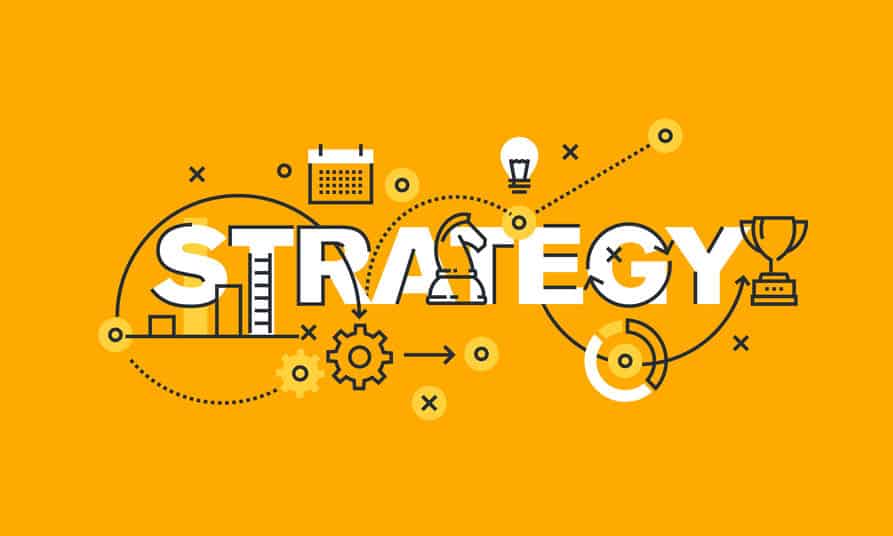Strategies applied in any organisation determine how to make use of the organisational capabilities in the most effective way so the set goals, objectives and business outcomes can be accomplished.
Using strategy analysis, the business analyst, through collaboration with stakeholders, identifies strategic and vital needs, provides the enterprise with the means to satisfy those needs, and aligns agreed strategy with the other strategies of the higher and lower level.
Each department or division in the organisation and every product or project may have its own strategy, so it’s crucial that all of these strategic approaches are in sync with each other, eliminating inconsistencies and disagreements.
Table of Contents
Strategy Analysis
The task of strategy analysis is to define future actions to satisfy the need for an enterprise and identify the activities that are defined by those needs and solutions, as well. By performing strategy analysis, business analysts define the context of requirements and designs of certain changes.
Simultaneously with defining the business need, the business analyst should also work on strategy analysis, so the stakeholders can have better information when deciding on addressing that need. As it addresses the changes and needs, strategy analysis must be performed through the entire project and any new information may require strategy adjustment.
The strategic analysis approach depends on the nature of the changes. If they are precisely defined and bring predictable outcomes, the business analyst can plan a clear strategy in advance. If the changes are unclear and with unpredictable outcomes, the strategy will need to be developed by focusing on the risks, testing, and experimenting to reach the option that will provide the best possible results.
The strategy analysis employs the BABOK’s core concept model
Business analysts collaborate with stakeholders to define the scope of the solution and gain an understanding of the organisational needs in a way that will provide a successful future outcome. Besides, they examine the value of the solution if a certain change is implemented and consider the overall context in the organisation while devising a change strategy.
The BABOK
Analyse Current State
Analysing the current state implies the understanding of the current state of the organisation. It lays out a foundation and provides context for a change. Through current state analysis, the business analyst gains an understanding of motives and reasons for a change in the way an organisation operates and what would that change affects.
Every change is motivated by problems or opportunities that can not be addressed in the current state of the enterprise. The business analysts cooperate with stakeholders to investigate the needs that drive the change and make that change possible. Proper understanding of the stakeholder’s needs is crucial for developing a strategy that will result in a desirable outcome.
Stakeholders, business processes, and technologies create the current state of the organisation and create the context for changes to occur in. Determining the scope of the current state helps set up an environment for changes and it can be described in various detail levels. The detail level of the model of the current state dictates the involvement of stakeholders and the eventual need for external resources.
The inputs for current state analysis are elicitation results that define the current state and needs of the organisation at the moment the need for change occurs. This analysis should provide the output in the form of current state descriptions and business requirements.
The main elements of the task of analysing the current state are:
- Business needs;
- Organisational structure and culture;
- Capabilities and processes;
- Technology and infrastructure;
- Policies;
- Business architecture;
- Internal assets;
- External influencers.
The guidelines and tools of use for analysing the current state are business analysis approach, enterprise limitation, organisational strategy, solution limitation, solution performance goals, solution performance measures, and stakeholders analysis results.
The techniques used for this task are:
- Benchmarking and market analysis;
- Business Capability analysis;
- Business model canvas
;
- Business cases;
- Concept modelling;
- Data mining;
- Document analysis;
- Financial analysis;
- Focus groups;
- Function decomposition;
- Interviews;
- Item tracking
- Lessons learned;
- Metrics and key performance indicators (KPIs);
- Mind mapping;
Observation; - Organisational modelling;
- Process analysis;
- Process modelling;
- Risk analysis and management;
- Root cause analysis;
- Scope modelling;
- Survey or questionnaire;
- SWOT analysis;
- Vendor assessment;
- Workshops.
Stakeholders of interest for the current state analysis are customer, domain subject matter expert, end-user, domain subject matter expert, operational support, project manager, regulator, sponsor, supplier, and tester.
Define Future State
By defining the future state in the organisation, the business analyst will define which objectives and goals are to be met to satisfy stakeholders’ needs and identifies which organisational parts will undergo changes to accomplish those goals. The analyst defines the environment in which the needs of an enterprise will be satisfied.
To do this the BA must first define success and what will be considered as a successful outcome. The planned outcome must be achievable with available organisational resources and agreed on with stakeholders. The level of detail at which the future state is described should enable identification of competing strategies, provide a clear and easily understandable definition of the outcome, explain the scope of the solution, assess the expected value, and create conditions for the agreement of all of the key stakeholders.
The definition of the future state should include the future context, organisational components that have been removed, added, or modified, changes of the organisational boundaries, relevant relationships, and expected outcomes. The description of the future state helps stakeholders gain a better understanding of the value the changes will bring and guides them through the decision-making process. If the value is difficult to predict, the future state definition should include adequate performance measures.
The primary inputs for defining the future state are business requirements that the future state will deal with. The expected outputs are business objectives, future state descriptions, and potential values.
The “Define Future State’ task is very complex and has several elements:
- Business goals and objectives;
- Scope of solution space;
- Constraints;
- Organisational structure and culture;
- Capabilities and processes;
- Technology and infrastructure;
- Policies;
- Business architecture;
- Internal assets;
- Identifying assumptions;
- Potential value.
Helpful guidelines and tools for defining the future state are current state description, metrics, and key performance indicators (KPIs), and organisational strategy.
The key stakeholders at this stage of business analysis project are customer, domains subject expert, end-user, implementation subject matter expert, operational support, project manager, regulator, sponsor, supplier, and tester.
Assess Risks
Assessing the risks provides a better understanding of any uncertain factor influencing the change, involves considering the effects these factors can have on accomplishing set goals and helps determine the risk-mitigating actions.
Business analysts analyse and manage risks related to the current and desired future state, change strategy, and any other task performed during the project. The risk assessment should identify potential consequences, their impact, the likelihood of risk, and a time at which the risk may occur. Identified risks are later used for developing change strategies.
The main inputs for this stage are business objectives, confirmed elicitation results, internal and external influences, potential value, and prioritised requirements. Risk management results are the main output that comes out of risk assessment.
Risk assessment includes the following elements:
- Unknowns;
- Constraints, assumptions, and dependencies;
- Negative Impact to value;
- Risk tolerance;
- Recommendation.
When assessing the risks, the business analysts may use the following guidelines and tools: business analysis approach, business policies, change strategy, current state description, future state description, identified risks, and stakeholder engagement approach.
The stakeholders involved in risk assessment are domains subject matter expert, implementation subject matter expert, operational support, project manager, regulator, sponsor, supplier, and tester.
Define Change Strategy
When defining the change strategy, the business analysts employ a gap analysis between current and future states, decide on the options for the future state, and provide stakeholders with recommendations on the approach that will bring the highest value while reaching the future state. In doing so they develop and evaluate multiple different approaches.
Properly defined change strategy should describe the context of the change, determine alternative change strategies, justify the selected approach, estimate the resources needed, identify the stakeholders, and explain the value of the change upon delivered solution.
The primary inputs for defining the change strategy are current state description, future state description, risk analysis results, and stakeholder engagement approach. the outputs of this task are the change strategy and solution scope.
Several key elements are a part of defining the change strategy:
- Solution scope;
- Gap analysis;
- Enterprise readiness assessment;
- Change strategy;
- Transition states and release planning.
Defining the change strategy involves the following key stakeholders: customer, domain subject matter expert, end-user, domain subject matter expert, operational support, project manager, regulator, sponsor, supplier, and tester.
Strategy Analysis Template
Business Analysis Doctor has a set of templates to support you strategy analysis in a business analysis template package
Conclusion – Strategy Analysis
This article has provided an introduction strategy analysis. Using strategy analysis, the business analyst can establish strategic needs and provide the enterprise the means to satisfy those needs to meet business outcomes.
If wish to explore strategy analysis further then you may wish to check out the LinkedIn Learning strategy analysis course
- The basics of strategy analysis, including the value and concepts.
- Shows how to start performing Strategy Analysis with four key tasks, starting with analysing the current state environment.
- Covers strategies to elicit information from stakeholders, conduct a gap analysis, and identify risk.
- Explains the solution options and financial measures that you can use to assess the viability of a proposed solution.
- Discusses techniques such as creating a business case to present your analysis to decision makers.
Learn more about the other IIBA business analysis knowledge areas:



